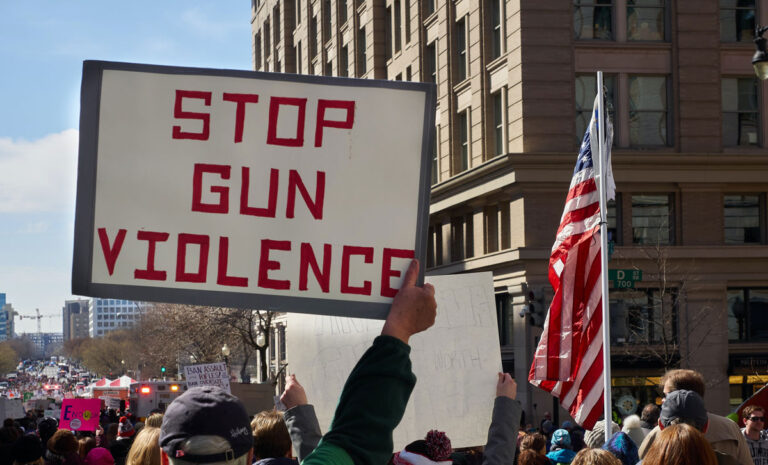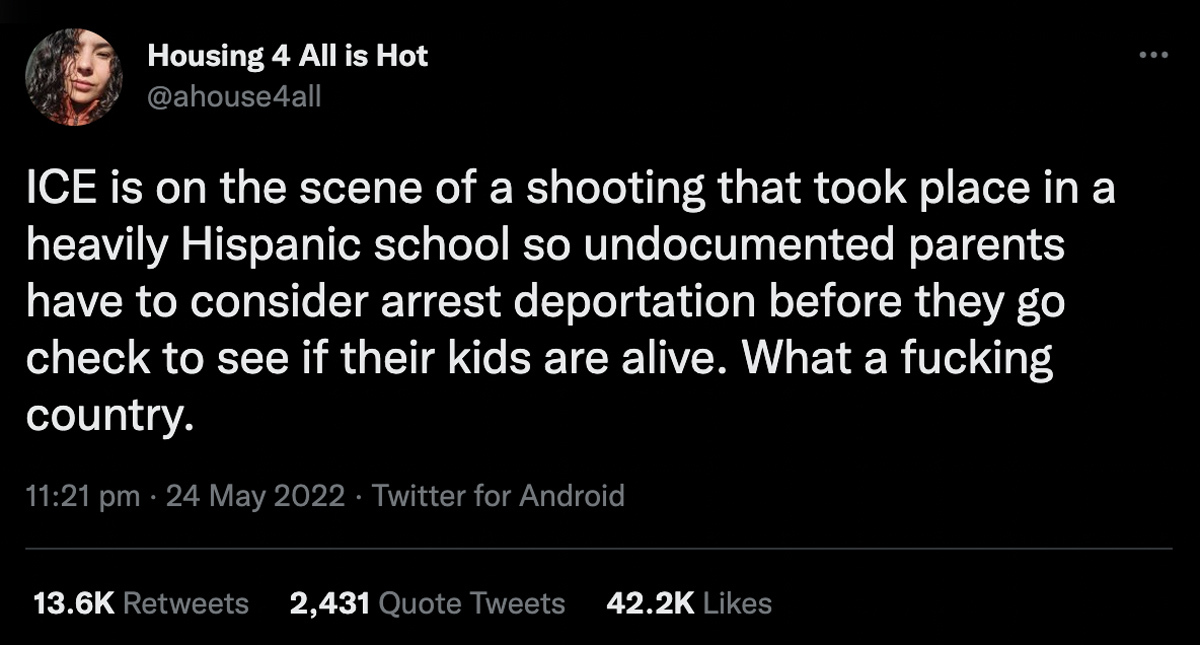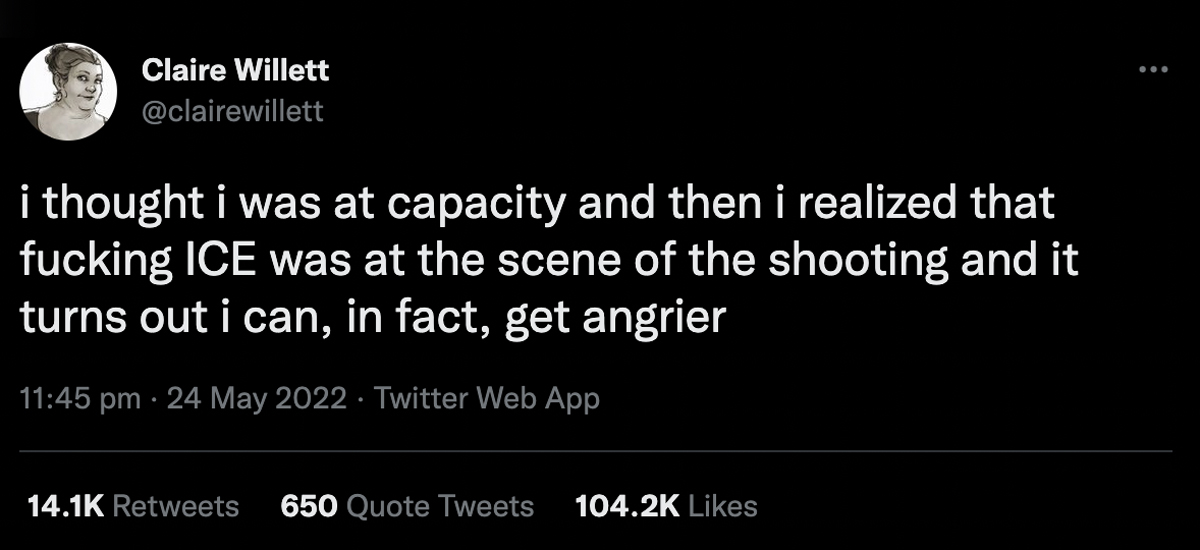Rumours of immigration control at predominantly Latinx Texas school shooting panics US citizens

The mass shooting that took place at Robb Elementary School, Uvalde, Texas—which educates an age range of 7 to 10—has reportedly taken the lives of 19 children thus far. The 18-year-old gunman, Salvador Ramos, allegedly carried out the attack with an AR-15 semi-automatic rifle, a handgun and high-capacity magazines, according to investigators. The devastating attack comes just one week after the racist attack in Buffalo, New York and has, once again, called into question the country’s gun laws—or lack thereof, to be more accurate. However, what looms over both incidents for many is the subject of race, ethnicity and immigration.
According to ABC News, teams of Border Patrol agents were among the first responders to the school as well as a ten to 15-member “SWAT-like tactical and counter-terrorism unit.” The gunman was allegedly shot down and killed by a Border Patrol officer part of an “elite…technical group” that entered Robb Elementary school, as reported by The Washington Examiner. Other accounts by outlets including ABC News have suggested the officer was working nearby and rushed into the scene alone, without waiting for backup, shooting Ramos dead.
Reports and rumours of border control attending to the scene of the crime—in what is an otherwise predominantly Latinx populated area—has left many voicing their concern for the wellbeing of the families affected. One Twitter user took to the platform to write, “ICE is on the scene of a shooting that took place in a heavily Hispanic school so undocumented parents have to consider arrest deportation before they go check to see if their kids are alive. What a fucking country.” ICE refers to the US’ Immigration and Customs Enforcement.

“They’re considered ‘first responders’ a whole 100 miles away from the border,” the user added. This sentiment has continued to saturate discussion of the shooting online, with a plethora of TikTok videos, tweets and comments sharing their horror. Author Claire Willet shared, “I thought I was at capacity and then I realised that fucking ICE was at the scene of the shooting and it turns out I can, in fact, get angrier.”

The role of Border Patrol in this case has caused a huge debate across social media and though such fears come from a very real and valid place in US political human rights, such allegations regarding the organisation’s involvement at the scene have not been confirmed. The presence of Border Patrol in Uvalde is allegedly quite common as the city is actually home to a US Customs and Border Protection station, as noted by The Telegraph. According to The Washington Post, their involvement in the case is also not an unusual series of events—due to the location of the city, Border Patrol agents often assist local law enforcement when needed.
Haven’t found confirmation of claims that ICE was checking for documentation in connection with Texas school shooting families. According to police, it was a border patrol agent who shot the suspect. pic.twitter.com/E7YJwyqGg7
— Darlene☔️Strozut (@Enstone) May 25, 2022
Though such rumours surrounding ICE’s specific involvement have not been confirmed, this response from users already shows that the US has cultivated a country and a population haunted by the trauma of weaponised whiteness and racialised violence.




